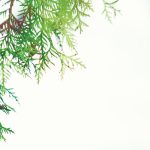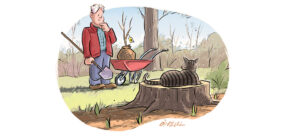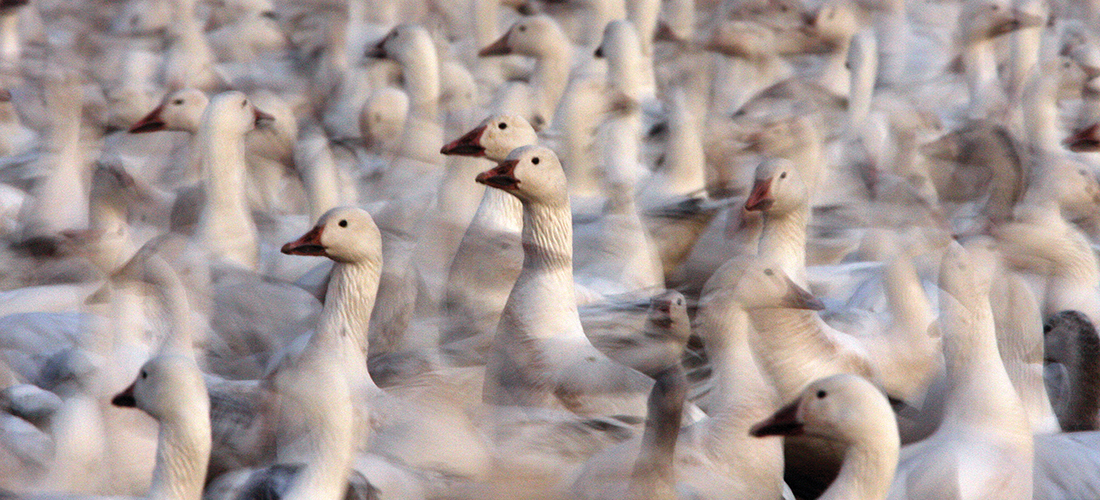
Snow Days
North Carolina’s greatest wildlife spectacle
Story and Photographs by Todd Pusser
They appear like clockwork each November, arriving by the tens of thousands from their breeding grounds in the far north of Alaska and Canada, settling in for the winter in scattered locations across northeastern North Carolina, many in federal wildlife refuges created, in large part, for them and their kin. Possessing stark white feathers, weights of more than 5 pounds, and wings that stretch over 28 inches from tip to tip, snow geese are among our state’s most spectacular waterfowl. Aesthetics aside, what makes snow geese so remarkable is their tendency to form enormous flocks on their wintering grounds.
Containing as many as 40,000 individual birds, these cacophonous flocks provide the state’s greatest wildlife spectacle and can be seen in many of our coastal wildlife refuges such as MacKay Island, Pea Island and Lake Mattamuskeet. However, the largest flocks tend to aggregate in the vast fields and lakes of Pocosin Lakes National Wildlife Refuge in rural Tyrell County, which is exactly where I found myself one winter’s day.
I had timed my arrival for late afternoon, just as the sun was starting to dip in the bright blue western sky. Experience had taught me that the geese spend much of the day roosting in the shallow waters of the refuge’s Pungo Lake, only to leave in unison in early evening to forage in nearby agricultural fields.
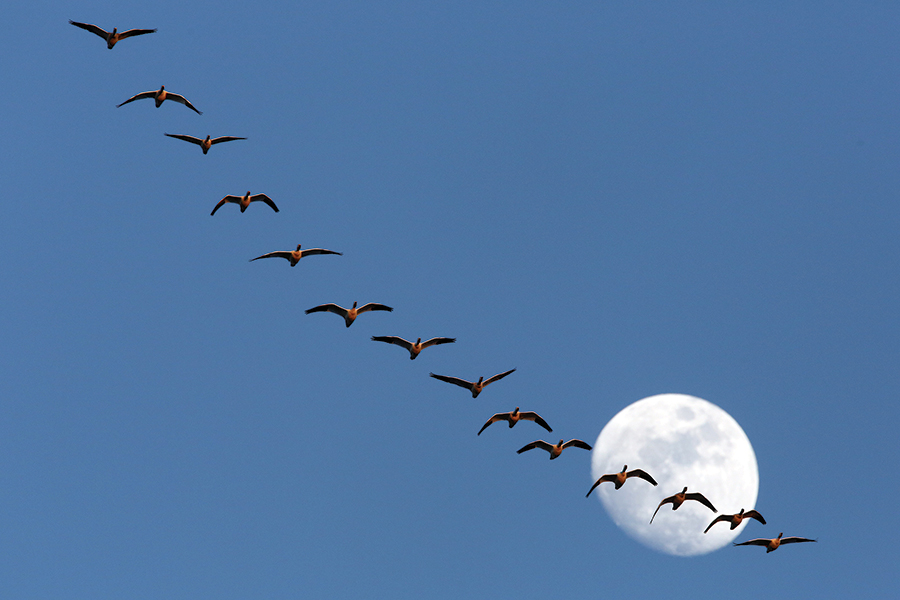
Turning down a refuge dirt road, a northern harrier, a large, white-tailed hawk, arched gracefully above a hedgerow that bordered a shallow irrigation ditch, its long wings barely flapping in the gentle breeze as it attentively searched the grasses for an unsuspecting rodent or bird. Up ahead in the road, a pair of white-tailed deer ambled into an immense field of corn, their brown bodies quietly disappearing among the golden stalks.
Rounding a sharp bend in the road, I slow my car. Stretched out to my right, in a recently plowed field, are hundreds of tundra swans, their large white bodies aglow in the late afternoon light. Like the snow geese I have come to see, they, too, are recent migrants from the far North.
Both the geese and swans are attracted to this area for the immense wetlands surrounded by fields of corn and soybeans, crops that provide a high-energy food resource that sustains the gregarious flocks through the long winter days. The refuge allows local farmers to plant crops on its lands as part of a cooperative farming program. Instead of paying the refuge rent, farmers are encouraged to leave a portion of their crop in the field for the migratory waterfowl.
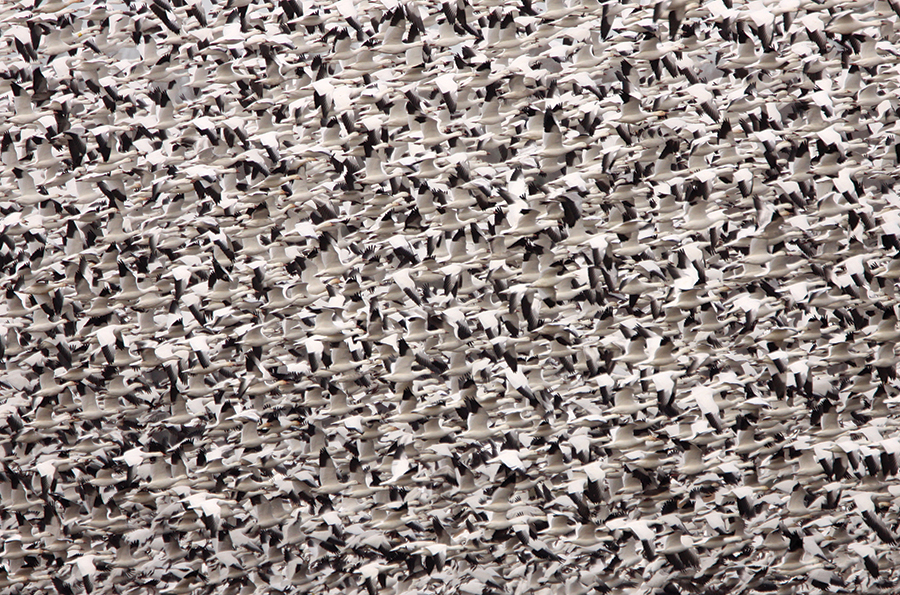
I put my car in park, roll down my window and turn off the engine. Pointing a long telephoto lens in the swans’ direction, I frame a small group standing at attention, carefully monitoring a predatory red-tailed hawk flying above the tree line at the far end of the field. Suddenly, I hear them, the roar of thousands of wings launching simultaneously from the surface of nearby Pungo Lake nearly a half-mile away. Despite the distance, the booming voices of the snow geese echo through the trees and across the vast expanse of the soybean field.
Before long, immense V-shaped lines of geese approach, high up in the sky from the east, and begin to circle above the tundra swans. Great swirling currents of snow-white wings, all beating in unison, descend, tornado-like, to the ground just a hundred yards from my parked car. Their synchronous movements are provocative. No other waterfowl are as gregarious, and I marvel at how the large birds fly so skillfully in such large aggregations. At no time do I see two birds so much as brush wing tips.
The geese snowstorm lasts for a full 20 minutes, and the open, plowed field, once a drab brown landscape of crop stubble, morphs into an enormous living white carpet full of frenetic energy. The noise is deafening.
There are few spots on the planet where one can witness such a gathering of animals, and it is remarkable to think that a spectacle such as this occurs so close to home. Even more astounding, I have this phenomenon all to myself. Nary another car is in sight.
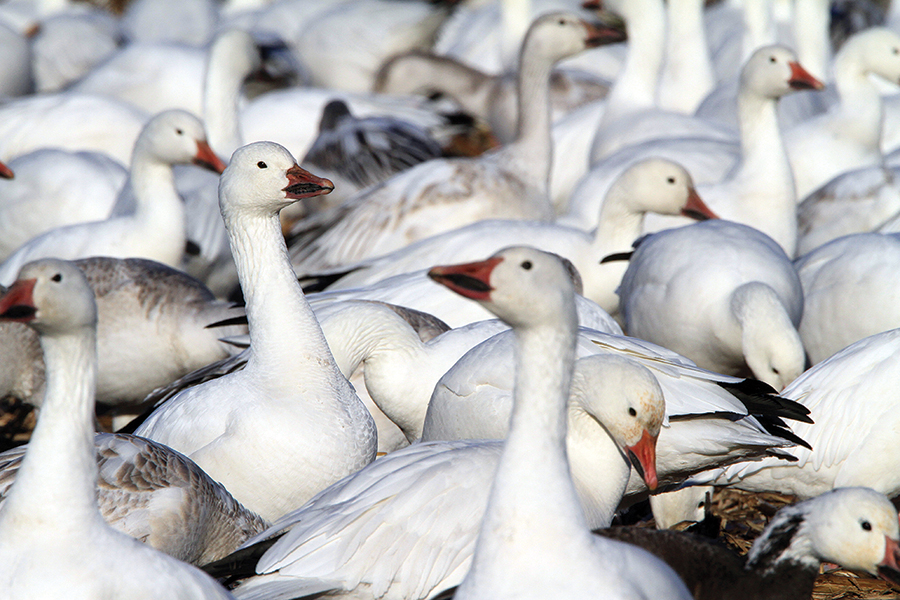
As the sun dips toward the western horizon, late afternoon light washes over the flock, casting a golden hue over the sea of white feathers. The incessant chorus continues as the geese, mixed among the taller tundra swans, eagerly gobble mouthfuls of nourishment, pausing occasionally to crane their necks upward looking around for potential predators.
After nearly an hour, the dark silhouette of a flapping eagle appears just over the tree line along the far corner of the field. The entire flock instantly takes notice and, for just a split second, their honking and cackling stops. Then, blastoff! Thousands of birds launch simultaneously in a furious explosion of flapping wings.
The flock rises into the early evening sky in a white shimmering wave and circles back toward the lake, leaving nothing but a few scattered feathers strewn across an empty field, and silence. PS
Naturalist and photographer Todd Pusser works to document the extraordinary diversity of life both near and far. His images can be found at www.ToddPusser.com.


